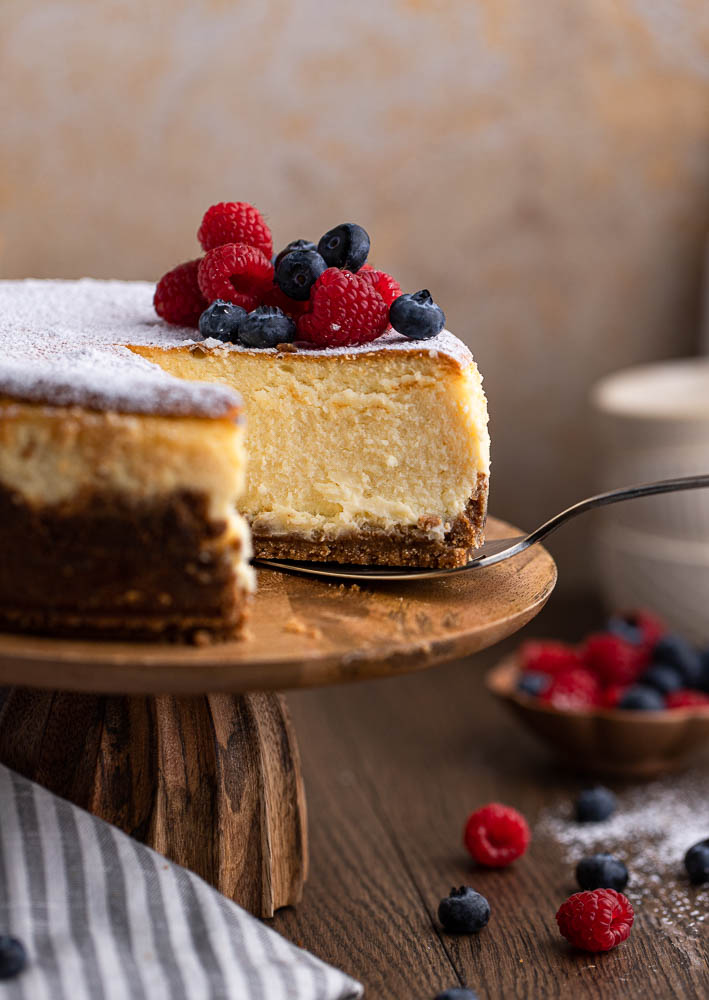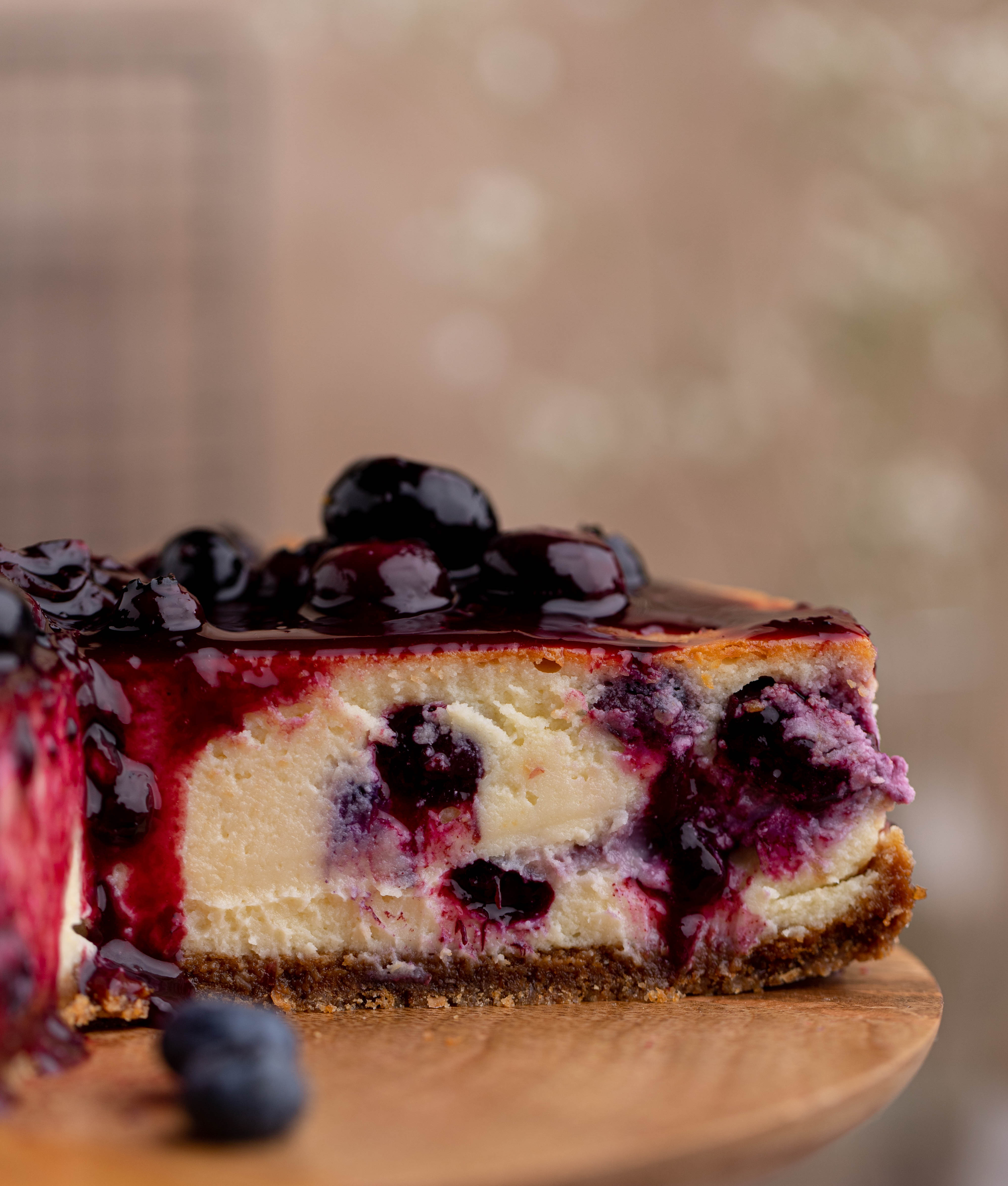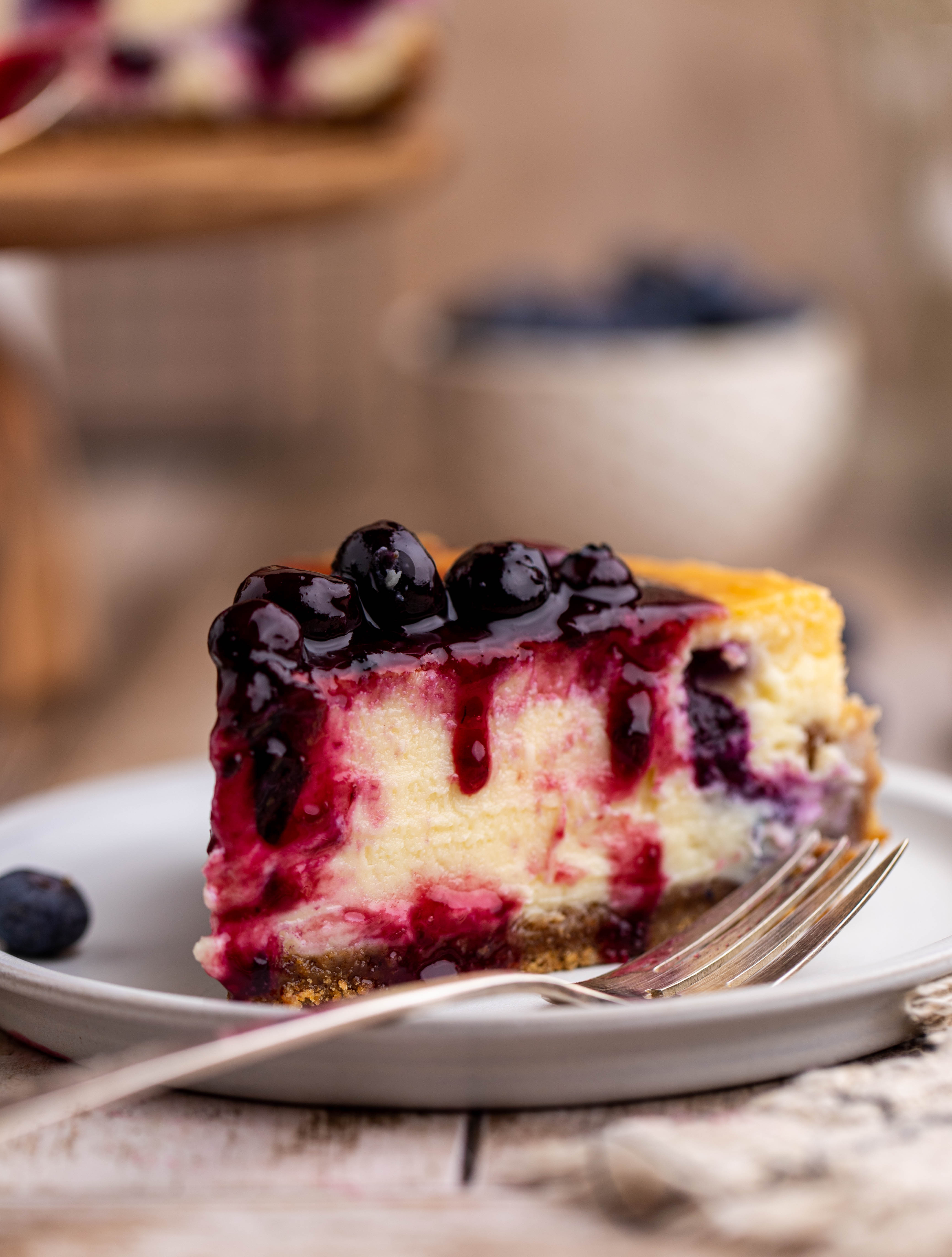Here, I am sharing the Perfect Cheesecake Hacks and all the possible reasons why a cheesecake may crack or not turn out as smooth as you want it to be.
Ingredients
- Always use the block Cream Cheese and stay away from the tub ones.
- Ensure to leave all dairy ingredients out of the fridge a couple of hours before making the cheesecake.

Why Cheesecake Cracks!
- Cold cream cheese and other dairy ingredients won't break down completely when cream cheese is cold. The lumps of cream cheese in the mixture make the cheesecake crack. The best to avoid this is to leave the cream cheese outside the fridge the night before. Also, using a food processor breaks down the cream cheese perfectly.
- Beating the cream cheese with other ingredients incorporates too much air into the cheesecake batter, resulting in cracking the cheesecake. Start slowly breaking the cream cheese with the paddle attachment and stop beating once the cheese is soft and creamy. Use low speed for a maximum of one minute.

And More Reasons
- Once other ingredients, such as sugar, are added, stop beating them as soon as the sugar is incorporated. Do not forget that too much beating will aerate the batter, and too much air will crack the cheesecake.
- When it comes to eggs, switch to a rubber spatula to mix them in. Lightly beat the eggs in a separate bowl and add them to the mixture. This will incorporate less air into the batter, preventing the cheesecake from deflating and cracking. Stop mixing once eggs are incorporated.

- Overcooking- The Cheesecake should bake until the edges are set, but the center is still jiggly. To test this, gently shake the pan. The cheesecake is baked if the center is a bit jiggly but the sides are firm. The cheesecake keeps baking while cooling down.
- Too-fast cooling—Once the cheesecake is baked, turn the oven off and crack open the oven door. The cheesecake must sit in that position for one hour, which allows it to cool down slowly. Then, bring the cake out, leave it on the counter for half an hour, and transfer it to the fridge. The cheesecake should stay in the fridge for 3-4 hours before cutting.
- Also, remember, if your cheesecake cracks, don't worry. You can always cover the cheesecake with fruits and other additives 😉
- When ready to remove the cheesecake from the pan, ring a kitchen towel under hot water and wrap it around the pan; this will warm up the butter around the cheesecake and make the release easier. Then, run the tip of a pairing knife around the top and open the pan's lock. Do not push the knife all the way to the bottom; only its tip should run around the cheesecake.

There are two ways to prepare the water bath
- The Foil Method: Cut a piece of aluminum foil large enough to cover the bottom and sides of the springform pan. Use thick and strong foil. To ensure no water seeps into the cheesecake, you can cut two pieces and wrap the bottom of the pan twice. Then, place this wrapped pan in a roasting pan and fill the roasting pan with boiling water up to half the height of the wrapped pan.
- The Pan Method: I personally like this method because the chance of water getting into the cheesecake is zero. Place the springform pan in a pan, the second pan in the roasting pan, and add the boiling water.

Cheesecake ideas:

Mark says
Thanks for your blog, nice to read. Do not stop.
Arezou Bahador says
Thank you so much Mark!